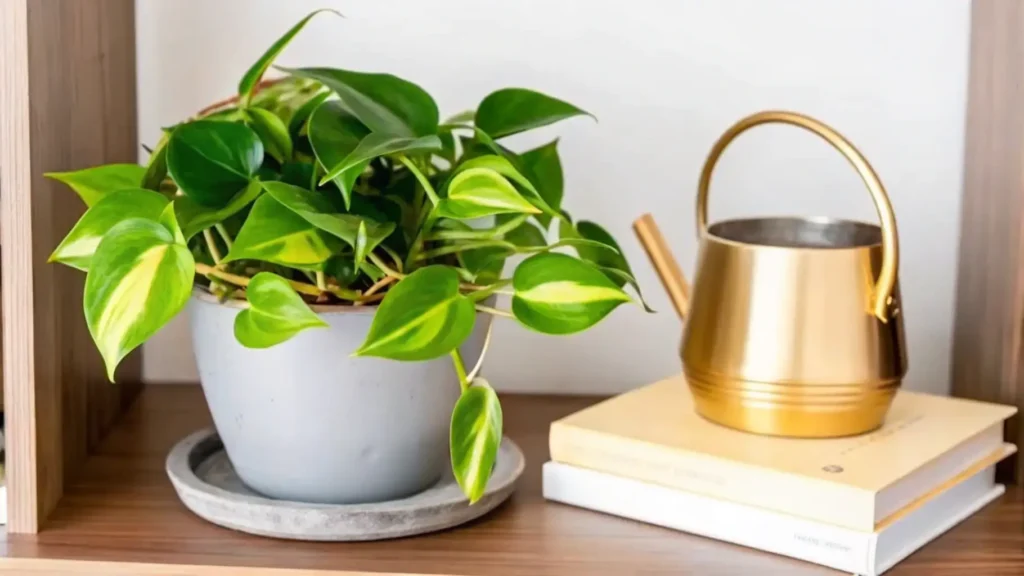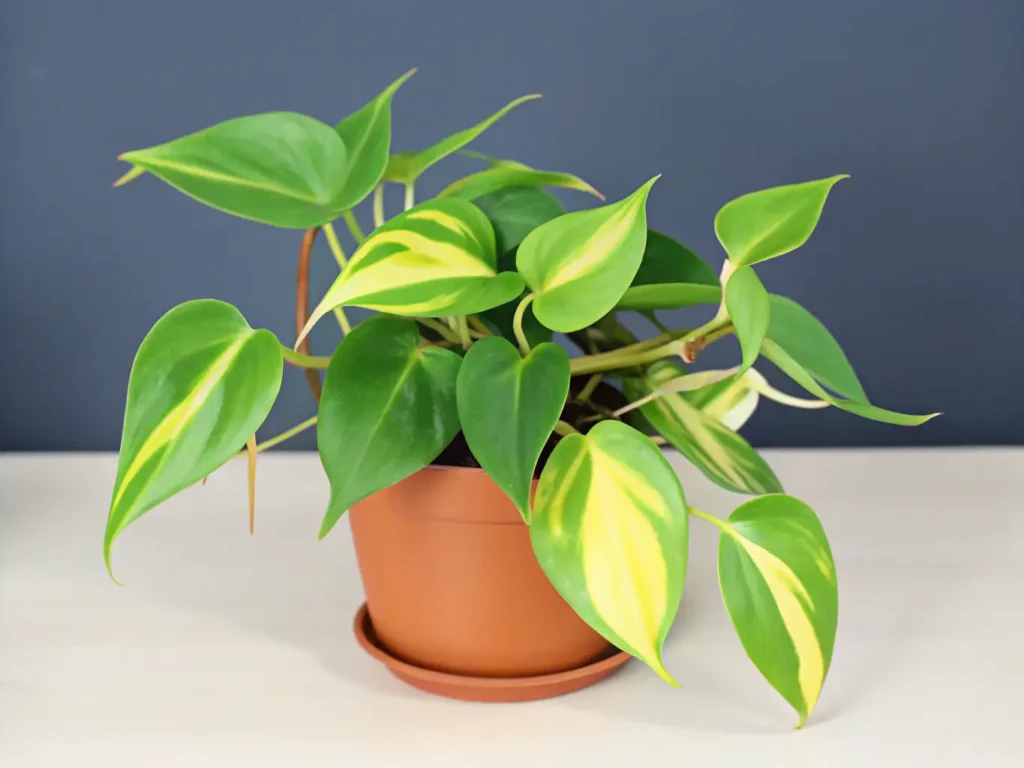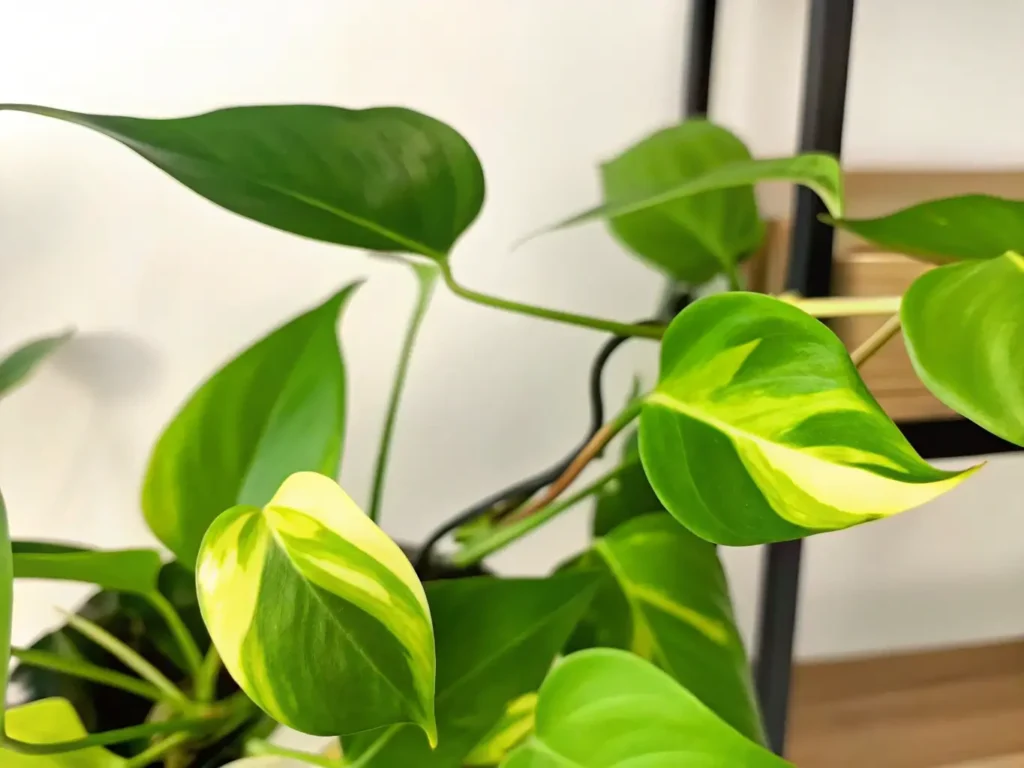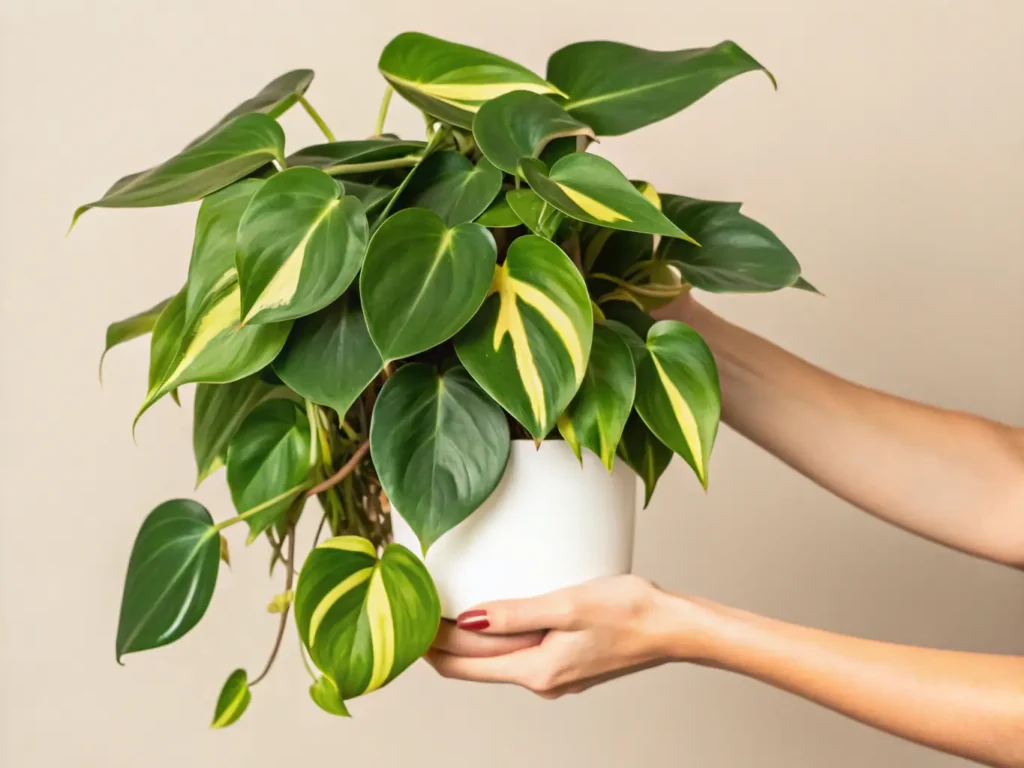
Fellow plant enthusiasts! I’m thrilled to share my personal experiences and tips around the philodendron brasil. This plant rocks colorful variegation and stuns indoors from winter’s cozy nights to summertime’s long days. In this guide, I’ll talk about Philodendron Brasil care, highlight ways to keep its variegation bright, and even share a few quick troubleshooting tips.
- Philodendron brasil is beloved for its bold stripes and resilient nature.
- Many people adore its heart-shaped leaves.
- If you want a low-maintenance but visually striking houseplant, look no further.
By the end, you’ll have a complete roadmap to confidently nurture your own Brazil philodendron or Brazil pothos plant!
Table of Contents
Introduction to Philodendron Brasil
What Is Philodendron Brasil?
This colorful tropical is a variety of philodendron hederaceum, commonly labeled as philodendron brasil, Brazilian philodendron, or Brazil philodendron. Believe me, it often gets confused with Brazil pothos or a Brazil pothos plant, but if you compare leaves closely, you’ll spot subtle differences. Its signature feature? Lime or golden stripes contrasting a deeper green leaf. That random splash of color makes it undeniably unique.
I first encountered philodendron brasil at a local plant shop, and I was struck by how bright the leaves looked in person. If you’re seeking a conversation starter, this plant is it!
Origins and History
- It hails from the tropics of Central and South America.
- Growers hybridized it from standard heartleaf philodendrons.
- Garden centers embraced its fast growth and easy-care traits.
- Hobbyists rave about how it can beautify a space all year round.
Overall, it’s a delightful addition for anyone looking to jazz up their indoor jungle.
Understanding Philodendron Brasil Variegation

How Variegation Occurs
In plants like the philodendron brasil, genetic mutations limit chlorophyll production in certain tissues. This creates those cool, light-colored patterns. Because these stripes are partially chlorophyll-free, it’s essential to provide the plant with enough bright, indirect light requirement to ensure the greener parts can feed the whole leaf.Short bullet list recap:
- Variegation results from reduced chlorophyll.
- Light levels influence how bold the colors appear.
- Consistent care helps preserve the variegation patterns.
Common Color Patterns in Philodendron Brasil
New leaves often unfurl bright and fade gently to deeper hues. That’s normal. I’ve noticed that in lower light, leaves sometimes come out more marbled, while in brighter conditions, they pop with sharper stripes. Don’t panic if your Brazilian philodendron leaf seems extra green at first—it might gain better contrast once it totally unfolds.
- Neon-yellow stripes appear on younger leaves.
- Splashes of cream or pale lime may show up.
- Occasionally, the plant reverts to green if it’s not getting enough energy.
Ideal Growing Conditions for Philodendron Brasil
Light Requirements
In my experience, a nice bright window with filtered sun is a match made in heaven. Direct rays at noon, however, can scorch those tender leaves. As recommended by writing experts, bullet points are handy to emphasize key tips,. So here they are:
- Place near an east- or north-facing window.
- Avoid direct sun for extended periods.
- Rotate weekly to maintain even leaf growth.
Temperature & Humidity
Since it’s a tropical variety, 65°F to 85°F is the sweet spot. Personally, I’ve noticed my philodendron brasil thrives best in a humid environment—like a bathroom with a sunny window. If you don’t want to lug it around, consider these humidity boosters:
- Small humidifier in the same room.
- Tray of pebbles under the pot with water to increase local humidity.
- Grouping plants for a microclimate effect.
Keep an eye out for leaf curl or browning edges, which might mean the air is too dry.
Potting and Soil Mix for Philodendron Brasil

Choosing the Right Container
- Drainage should be top of mind. If water just sits, the risk of root rot soars.
- Terra-cotta pots allow moisture to escape, reducing the chance of soggy conditions.
- Plastic or ceramic pots are fine too—just double-check for drainage holes.
- If you love the “dangling vines” look, consider a hanging pot to showcase those trailing leaves.
Short paragraphs with bullet points can make reading smoother,. That’s why I’m breaking it down here.
Soil Type and Drainage Needs
I like mixing an organic potting mix with perlite or orchid bark for aeration. This ensures water can drain away while roots stay happily oxygenated. If the soil stays damp days after watering, it might be too dense.Here’s the recipe I swear by:
- 2 parts regular potting soil.
- 1 part perlite.
- A dash of coarse bark chips (optional).
That combination usually keeps my Brazil philodendron healthy, with minimal fuss.
Watering and Fertilizing Your Philodendron Brasil

Proper Watering Techniques
My main tip? Check dryness by poking a finger into the top inch of soil. If it’s bone-dry, then water away. Heavy, frequent watering is a common mistake that leads to yellowing leaves or even dreaded root rot. Setting a simple houseplant watering schedule—say, once a week—can help you form a routine. But always adapt based on the soil’s moisture level.Short bullet points to sum it up:
- Water when the top inch is dry.
- Let excess drip out the drain holes.
- Decrease frequency when it’s cooler.
Essential Nutrients and Fertilizer Schedules
I use a mild, water-soluble fertilizer at half strength about once a month during spring and summer. This encourages robust, variegated growth. Over-fertilizing can burn delicate leaves, so err on the lighter side.
- Look for a balanced NPK fertilizer (like 10-10-10).
- Feed less in fall and winter when growth slows.
- Watch for discolored or stunted leaves—they might need a nutrient boost.
Common Pests and Diseases
Identifying Leaf Issues
Often, philodendron brasil faces pests like spider mites, aphids, or mealybugs, though it’s not a bug magnet like some other plants. Be extra mindful if you see:
- Tiny speckles or webbing under leaves (spider mites).
- White, cottony fluff in leaf joints (mealybugs).
- Deformed young leaves, often a sign of aphids.
Learning to spot these early can save you major headaches. Yellowing or patchy leaves could also mean fungal or bacterial issues. Keep your eye on subtle signals.
Preventing and Treating Infestations
- Isolate any infected plant immediately to prevent spread.
- Use neem oil or insecticidal soap on affected areas.
- A general overview of safe pesticide use is available from the U.S. Environmental Protection Agency.
- Check your plant weekly—especially the undersides of leaves.
If you notice root rot from overwatering, prune damaged root sections, repot in a fresh mix, and water more sparingly.
Styling and Display Tips for Philodendron Brasil

Using Support Poles or Moss Poles
Philodendron brasil can climb if you give it a moss pole or wooden stake. I love the vertical, tropical look that emerges when the vines cling to these structures.
- Tie vines gently with soft string or plant ties.
- Keep the pole moist (if it’s moss) so aerial roots latch on.
- You might see larger leaves as the plant climbs.
Decorative Pot and Plant Placement Ideas
- Let the vines dangle gracefully from a hanging basket.
- Place your Brazil pothos plant or Brazilian philodendron on a shelf, letting its stems cascade.
- If you want a variegated theme, position your philodendron brasil near a White Princess Philodendron to really amp up those contrasting leaf patterns.
- Rotate every few weeks to keep your plant from bending toward a single light source.
These simple display moves can transform your living room into a stunning mini rainforest.
Troubleshooting Philodendron Brasil Problems
Yellowing or Browning Leaves
When leaves turn yellow, it generally means you’re overwatering. Brown edges typically suggest dry air or inconsistent watering. Small bullet points are effective for quickly diagnosing leaf woes.
- Yellow leaves → too much water or possibly low light.
- Brown tips → dry environment or fertilizer burn.
- Mushy stems → root rot, which is serious, so cut back on watering.
Loss of Variegation
- Insufficient light is the biggest culprit.
- To fix it, move the plant to a brighter spot or adjust blinds.
- Prune any leaves that have turned fully green. This sometimes kick-starts fresh variegated growth.
- If the plant is pot-bound, repot it to give roots space.
A few small tweaks can often revive those lovely stripes. Don’t stress—philodendron brasil is quite forgiving once you pinpoint what’s wrong.
Expanding Your Collection Beyond Philodendron Brasil
Similar Variegated Philodendrons
If you become obsessed (like me), you’ll probably want more variegated philodendrons. Philodendron hederaceum ‘Rio’ or philodendron ‘Birkin’ are also known for unique patterns.
- Many show distinctive brushstroke-like markings.
- They share similar care needs: moderate water, bright indirect light, and occasional fertilizer.
- Mixing them contributes to a vivacious corner in your home.
Other Easy-Care Houseplants
Pairing your Brazil philodendron with a Snake Plant can create a surprising but awesome display. The snake plant is super hardy and thrives under minimal upkeep.
- Consider collecting pothos varieties too; though not exactly the same as a philodendron, they’re equally laid-back.
- Differences between pothos vs. philodendron revolve around leaf thickness and vine structure.
- If you want a variety, try air plants or ZZ plants for unique shapes.
No matter the choice, building a low-maintenance collection is an easy way to keep your home naturally inviting.
FAQs
How Do You Grow Philodendron Brasil Faster?
Steady feeding, good warmth, and well-placed lighting can really push growth. Prune leggy vines to encourage fuller branching. Maintain:
- Monthly fertilizer in spring/summer
- At least 65°F, ideally in the 70s
- A bright spot, but not direct sun
These steps can help it sprout new leaves more frequently.
Can Philodendron Brasil Tolerate Low Light?
Yes—though it’s a bit of a trade-off. You can keep it alive in a dimmer spot, but you might lose some of the vivid color stripes. No need to panic, but if leaves turn mostly green, shift it closer to a window.
Should I Prune My Philodendron Brasil Regularly?
Routine pruning keeps your Brazil pothos plant or Brazilian philodendron from getting all lanky. Focus on trimming sparse vines a few inches below a leaf node. Pruning fosters new side shoots, which thickens the overall look.
Why Are the New Leaves on My Philodendron Brasil Smaller?
Possible reasons:
- Not enough light or nutrients.
- Pot-bound roots restricting growth.
- Mismatch in watering schedule (too frequent or too little).
Repot, feed lightly, or adjust the light exposure for bigger, showier leaves.
Final Thoughts
The philodendron brasil provides lively, colorful charm indoors. With proper light, water, and occasional fertilizer, it thrives easily. I love how it drapes or climbs, perfect on a shelf or in a hanging basket. Follow these tips, and your philodendron brasil (or Brazil philodendron/Brazil pothos) will reward you with vibrant foliage year-round—just watch and tweak as needed.

1 thought on “How to Grow and Care for Philodendron Brasil”
Comments are closed.